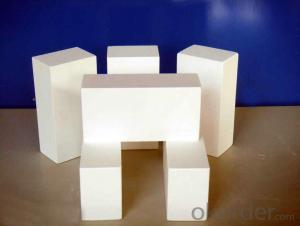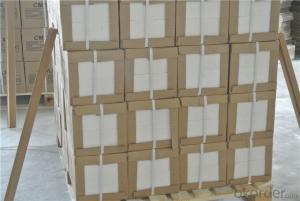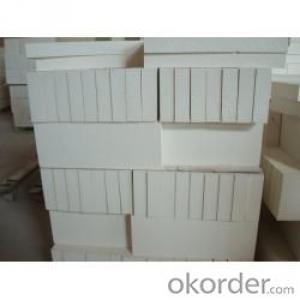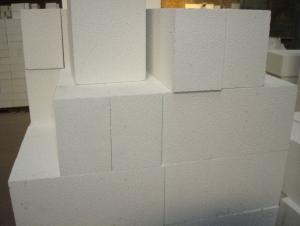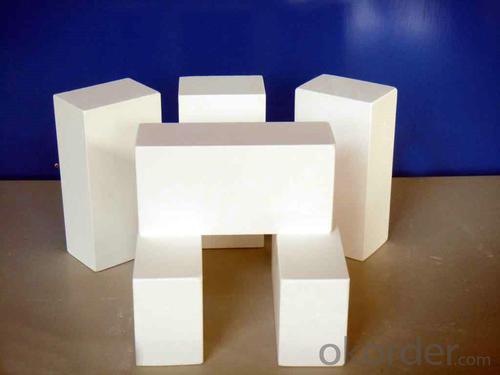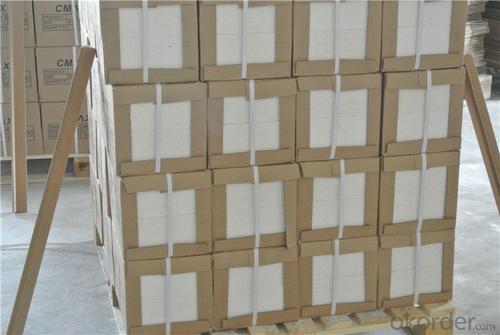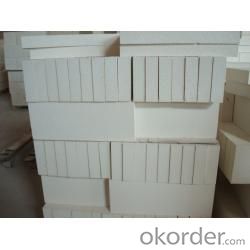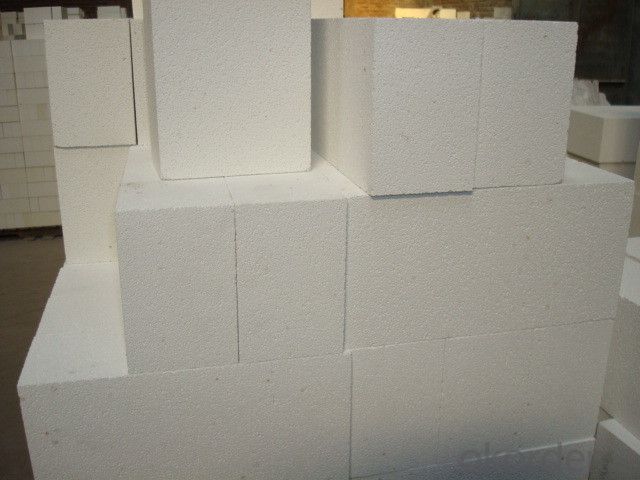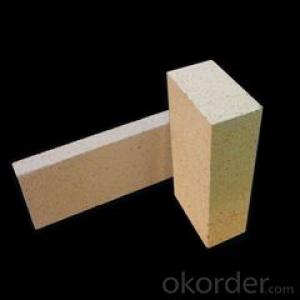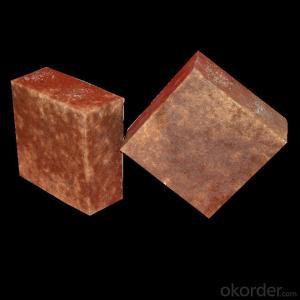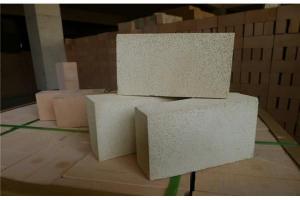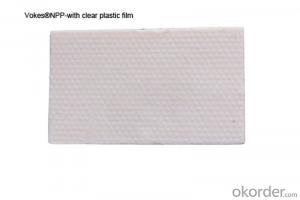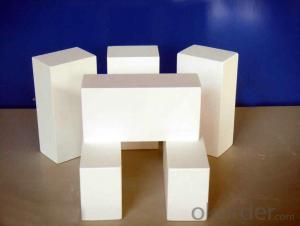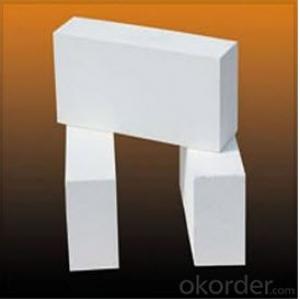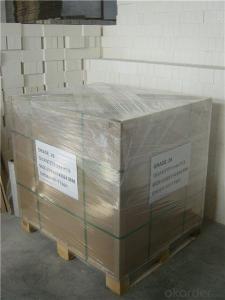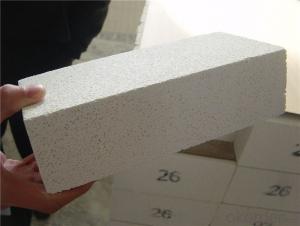Insulating Fire Brick for Melting Furnace - Good Thermal Insulation Refractory Fire Clay Brick
- Loading Port:
- Shanghai
- Payment Terms:
- TT OR LC
- Min Order Qty:
- 1 m.t.
- Supply Capability:
- 1000 m.t./month
OKorder Service Pledge
OKorder Financial Service
You Might Also Like
Thermal Insulation Fire Clay Brick
Refractory brick is a block of refractory ceramic material used in lining furnaces, kilns, fireboxes, and fireplaces.
We provide high quality Refractory Fire Bricks that are used on wide range in the various industries like Cement, Glass and Steel. Refractory Fire Bricks are provided as per the quantity and specifications required by the customers. We provide an extensive range of Refractory Fire Bricks at reasonable prices that depend upon the quantity ordered.
Application
Insulating Fire Brick are used for the lining of converter, alternating current arc furnace, direct Current arc furnace and the ladle slag line, etc.
Company Advantage
(1)Long Insulating Fire Brick manufacture history: 25 years manufacturer
(2)Advanced equipment
(3)Diversification of production standards: ISO ANSI FEPA JIS ASTM
(4)Flexible payment: T/T L/C D/P D/A
(5)Professional marketing team and after-sale service
Insulating Fire Brick main feature:
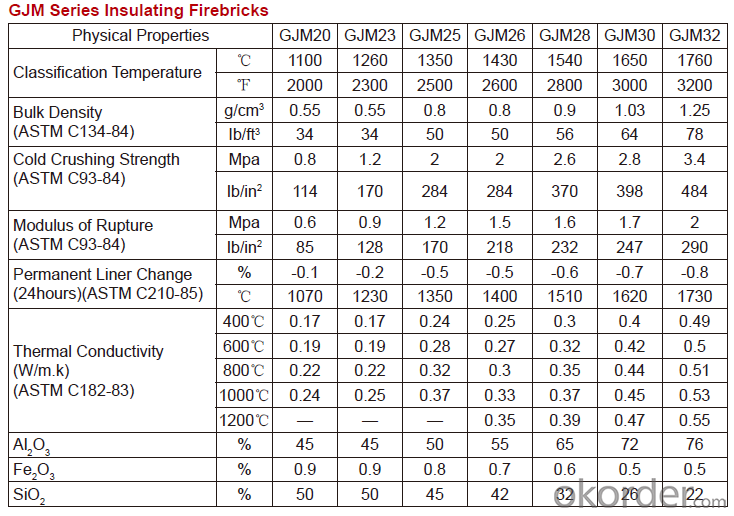
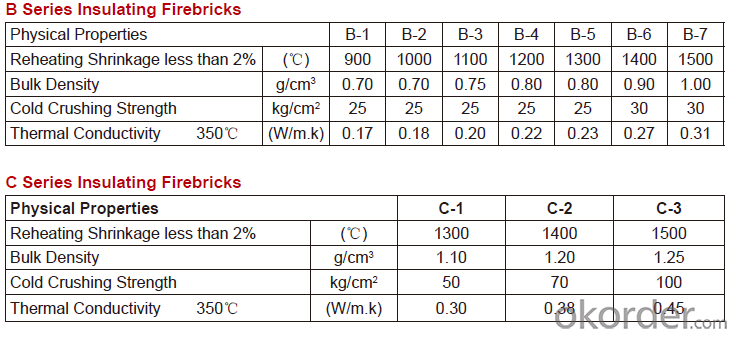
Equipment
1 unit of Ceramic Abrasive (SG Abrasive) pilot production line
2 units of Compact grain Abrasive pilot production lines
1 unit of high-end coated abrasives (abrasive cloth) production line
2 units of Boron Carbide production lines
3 large flexible crushing and sieving lines for grit production lines
6 units of 5000KVA-10000KVA dumping type electric arc furnaces for Brown Fused Alumina fusion
Q1 What’s the transport method?
A1 FCL delivery goods with wooden pallet or wooden case by sea; If LCL delivery, must with wooden case; Sometimes need open top, flat rack or bulk cargo.
Q2 What’s the required payment term?
A2 Generally 30% TT as the prepayment, 70% TT before delivery. If need, 100% Irrevocable Letter of Credit or negotiation.
Q3 Which country are our products exported to?
A3 Apart from entire Chinese market, the US, Russia, Japan, Korea, Australia and some Southeast Asian Nations.
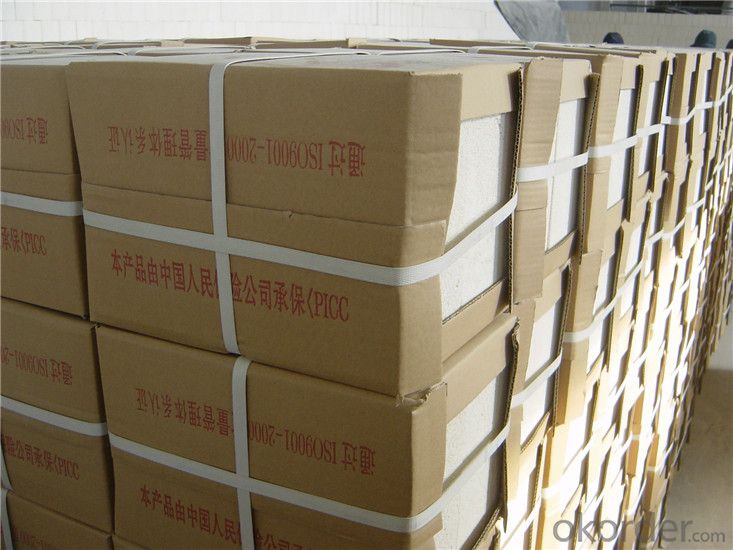

- Q: Can insulating fire bricks be used for insulation in incinerators?
- Yes, insulating fire bricks can be used for insulation in incinerators. Insulating fire bricks are made from lightweight refractory materials and have high insulating properties, making them ideal for applications that require heat containment and energy efficiency, such as incinerators. These bricks have low thermal conductivity, which means they can effectively trap and retain heat within the incinerator, preventing it from escaping and improving the overall efficiency of the incineration process. Additionally, insulating fire bricks are resistant to high temperatures and can withstand the harsh conditions typically found in incinerators, making them a reliable choice for insulation purposes.
- Q: Can insulating fire bricks be used in tundish linings?
- Yes, insulating fire bricks can be used in tundish linings. Insulating fire bricks are designed to resist high temperatures and provide excellent insulation, making them suitable for use in tundish linings where heat containment is crucial.
- Q: How do insulating fire bricks perform in terms of sound insulation?
- Insulating fire bricks are primarily designed for excellent thermal insulation, but their performance in terms of sound insulation can vary. While they can provide some sound reduction due to their dense and non-porous nature, they are not specifically engineered for soundproofing. The level of sound insulation offered by insulating fire bricks depends on factors such as brick thickness, density, and sound frequency. Generally, insulating fire bricks can somewhat reduce high-frequency noises, but they may not be as effective in blocking low-frequency sounds. For superior sound insulation, specialized acoustic materials or construction techniques may be more appropriate.
- Q: Can insulating fire bricks be used in aluminum smelting furnaces?
- Yes, insulating fire bricks can be used in aluminum smelting furnaces. These bricks have high insulating properties and can withstand the high temperatures required for aluminum smelting. They help to maintain the heat within the furnace, improve energy efficiency, and reduce heat loss, making them suitable for use in such furnaces.
- Q: Are insulating fire bricks suitable for use in incinerators?
- Indeed, insulating fire bricks are well-suited for utilization in incinerators. Tailored specifically to endure elevated temperatures and offer exceptional insulation qualities, these bricks prove to be ideal for incinerators. They exhibit remarkable resistance to thermal shock, ensuring their structural integrity remains intact even under extreme heat exposure. Moreover, these bricks possess low thermal conductivity, which aids in diminishing heat loss and enhancing the overall energy efficiency of the incinerator. The combination of their heat endurance and insulation effectiveness renders them a dependable option for incinerator utilization.
- Q: Do insulating fire bricks have a high resistance to spalling?
- Yes, insulating fire bricks have a high resistance to spalling. Spalling refers to the breaking off or flaking of the surface of a material, and in the case of fire bricks, it typically occurs due to high temperatures and thermal shock. Insulating fire bricks are specifically designed to withstand these extreme temperatures and thermal cycling, making them highly resistant to spalling. These bricks are made from high-quality refractory materials, such as alumina or silica, which have excellent thermal shock resistance. Additionally, they are manufactured with a low thermal conductivity, which helps to minimize heat transfer and reduce the risk of spalling. Overall, insulating fire bricks are an ideal choice for applications where high resistance to spalling is required, such as in furnaces, kilns, and other high-temperature environments.
- Q: Are insulating fire bricks resistant to thermal spalling?
- Yes, insulating fire bricks are resistant to thermal spalling. Thermal spalling refers to the phenomenon where a material cracks or breaks due to rapid temperature changes or thermal shock. Insulating fire bricks are specially designed to withstand high temperatures and thermal cycling without spalling. They have a low thermal conductivity, which means they can effectively insulate against heat transfer and minimize the stress caused by thermal expansion and contraction. Additionally, the composition and structure of insulating fire bricks are engineered to provide excellent resistance to thermal spalling, making them a reliable choice for applications that involve extreme heat conditions.
- Q: Can insulating fire bricks be used in high-velocity gas flow applications?
- Insulating fire bricks are suitable for high-velocity gas flow applications due to their excellent thermal insulation properties, low thermal conductivity, and high resistance to temperature fluctuations. These characteristics make them appropriate for use in various high-temperature environments, including those with high-velocity gas flow. When subjected to high-velocity gas flow, insulating fire bricks maintain their structural integrity and insulation properties, effectively providing thermal insulation and protection. They find frequent application in kilns, furnaces, boilers, and other industrial equipment where high-velocity gas flow is present. However, it is essential to consider the specific requirements and characteristics of the gas flow in the given application. Parameters such as temperature, pressure, and chemical composition of the gas must be considered to ensure the compatibility and endurance of the insulating fire bricks. In conclusion, insulating fire bricks can be utilized in high-velocity gas flow applications due to their thermal insulation properties and resistance to temperature fluctuations. Nevertheless, it is crucial to carefully evaluate the specific requirements and characteristics of the gas flow to guarantee proper compatibility and performance.
- Q: Are insulating fire bricks resistant to molten metals?
- Yes, insulating fire bricks are generally resistant to molten metals. They are specifically designed to withstand high temperatures and provide insulation, making them suitable for applications involving molten metals.
- Q: Can insulating fire bricks be used in pizza ovens or outdoor grills?
- Yes, insulating fire bricks can be used in pizza ovens or outdoor grills. These bricks are designed to withstand high temperatures and provide excellent insulation, making them ideal for retaining heat and creating consistent cooking conditions in pizza ovens and grills.
Send your message to us
Insulating Fire Brick for Melting Furnace - Good Thermal Insulation Refractory Fire Clay Brick
- Loading Port:
- Shanghai
- Payment Terms:
- TT OR LC
- Min Order Qty:
- 1 m.t.
- Supply Capability:
- 1000 m.t./month
OKorder Service Pledge
OKorder Financial Service
Similar products
Hot products
Hot Searches
Related keywords
